Large Wine Casks in Hospitality Wine Décor
Lovers of fine wine and food often savor the rich, authentic atmosphere in which they are enjoyed as much as they do the food and wine. One example of this is the new wave of wineries that now serve fine food with their wines in a refined, “working winery” environment. Here guests are surrounded by large oak wine casks and barrels, and other tools and symbols of the art of wine making – often inside an operating wine cave or cellar.
Hospitality designers and owners can bring that same ambiance into the dining rooms and bars of restaurants and clubs with a combination of authentic looking wine cask reproductions and surroundings that evoke the feeling of a working winery, such as this bar room wall at Fogo de Chao Brazilian Churrascaria in Chicago.

In this article we explore the anatomy of authentic large old wine casks that can be incorporated into hospitality interiors, as well as several examples in Fogo de Chao’s chain of fine restaurants.
It is generally not practical to source and re-furbish real retired wine casks for hospitality interiors given their size, expense and condition. Nor is room generally available for an entire cask, much less several of them. The answer to both problems is to build reproduction cask heads from scratch, and to wall-mount one or more in a supporting composition of wood or stone alcoves, archways or grottos as a focal point on a large wall as seen above.
Let’s take a closer look.
Cask Size and Shape
The very familiar 225 liter (~60 gallon) wine barrel is roughly 2 feet in diameter and 3 feet long. Wine casks on the other hand range from 3 feet to many feet in diameter. The head end may be round, or oval shaped. A good sweet spot for many dining and bar areas is 4’ to 6’ diameter rounds, or 4’ x 6’ ovals.
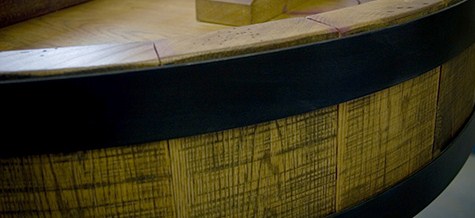 The heads need to be deep enough to give the impression they were cut off the end of a real working wine cask, or perhaps better yet, that the rest of the cask is hidden behind the wall. They usually also need to be shallow enough that they don’t consume too much floor space. A depth of 6” to 12” is generally optimal. In this example the side staves are about 8” long, bounded by 2” wide steel hoops at the front and back.
The heads need to be deep enough to give the impression they were cut off the end of a real working wine cask, or perhaps better yet, that the rest of the cask is hidden behind the wall. They usually also need to be shallow enough that they don’t consume too much floor space. A depth of 6” to 12” is generally optimal. In this example the side staves are about 8” long, bounded by 2” wide steel hoops at the front and back.
The side staves shown here are made from rough sawn 2” thick reclaimed white oak boards. The head itself is made from random width white oak boards and is recessed 2” in from the front edge of the side staves. All wood, steel and other features of the cask are carefully selected, aged and distressed to give the impression they were part of an authentic 100+ year old wine cask.
Cask Head Features
A key feature of most large wine casks is the massive center brace which is designed to keep the head from bulging outward from the pressure of the wine. Two basic styles are common: a single solid beam as shown in the photo at the top of this article, and a framed brace shown below with metal hardware detail.

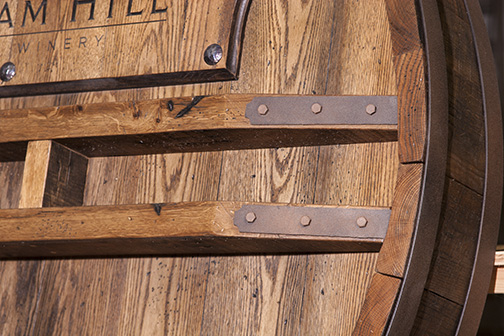

Knock-out Port and Tasting Spigot
Another key feature on the head is a knockout port for draining and cleaning.
Shown here is such a port with its supporting oak cross brace and hand forged antique tensioner – which is basically a large decorative “wing nut” used to pull the cover tight.
Under the knockout near the bottom of the cask head is an authentic 100+ year old antique brass tasting spigot.
Distress marks are made with a variety of sharp and blunt tools to simulate 100+ years of use. These include various dings, dents, scratches and worm holes filled with a dark glaze. Also note the simulated stains from wine leaks around the knockout and spigot.
Decorative Carved Logo
Last but not least, a decorative carved logo of a winery (or the wine inside) may be incorporated. This carving may be made directly on the cask head as seen in the top photo, or alternatively on a decorative plaque that is attached to the head. In the examples below the plaque has a fancy shape, a cove routed edge and large decorative clavos heads around the perimeter. On a side note, these logo carvings may offer an opportunity for the cask to be “sponsored” by wineries or distributors who supply wine to the establishment.
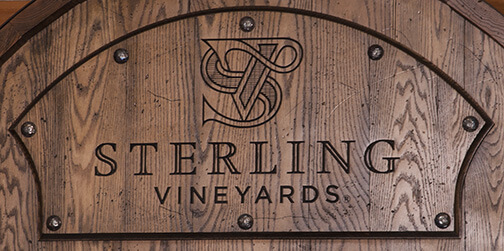
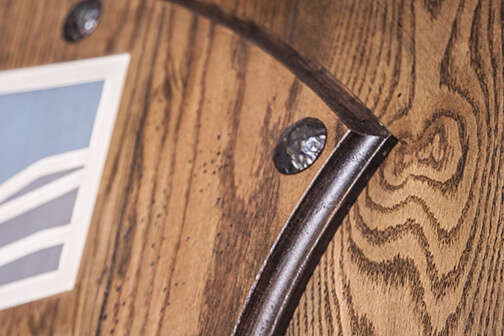
Cask Settings
Finally, we take a quick look at some possible design concepts for the setting surrounding the casks. Perhaps the most effective designs evoke the look and feel of an authentic working winery, where the casks are mounted in, or surrounded by, a stone or wood alcove, archway or grotto. Each of the Fogo de Chao installations shown below employs a somewhat different take on this concept.
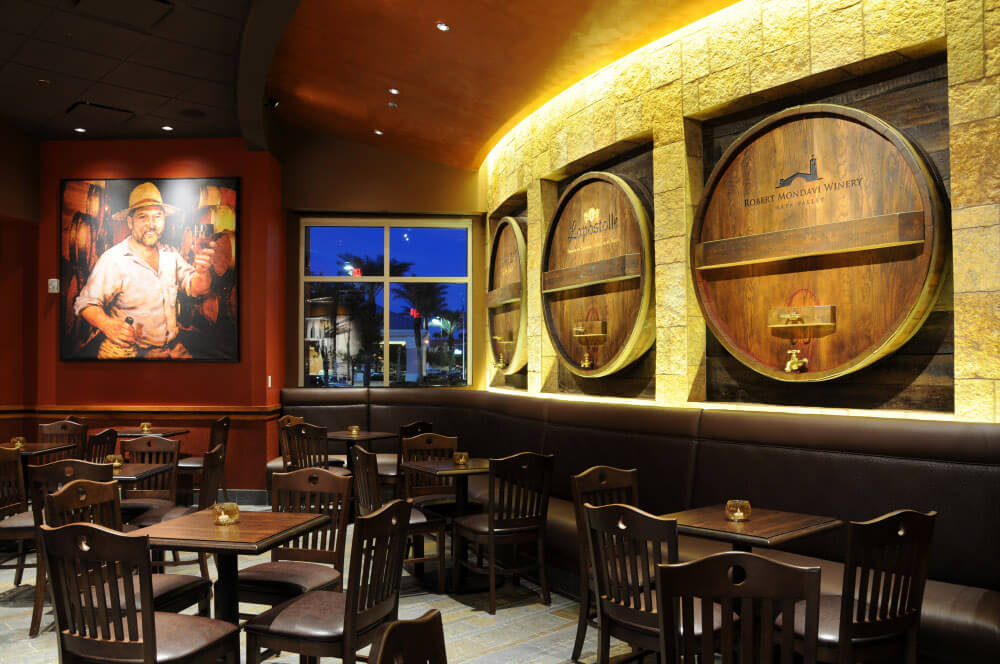
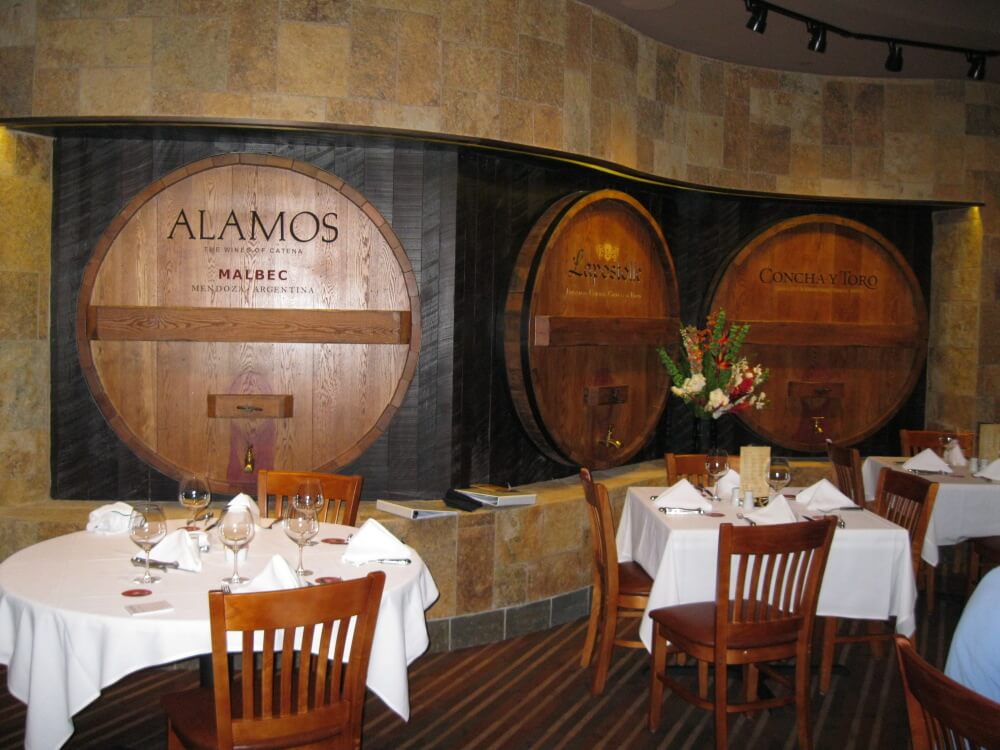
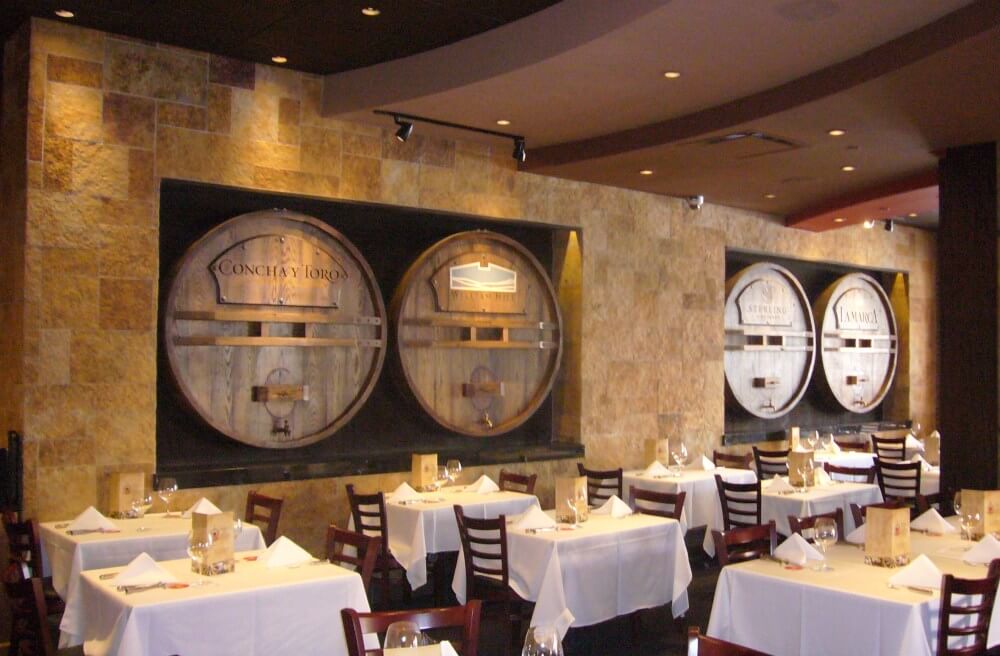
Thanks to Fogo de Chao Corporate Architect Cliff Maillet II for use of his interior designs and photos. We conclude with his thoughts on this wine cask / wine décor concept.
“Wine has always been a large part of the Fogo de Chao culture and dining experience. This is by far the most interesting feature that we have created to express this mindset. We want to celebrate the role that wine plays in a fine dining experience at Fogo de Chao. Hence our giant glass enclosed wine room that is visible from the entry, bar and dining room in conjunction with the oversized wine casks in the Bar area. We are all very pleased with eWoodArt’s craftsmanship. It’s the details that sell the authenticity.”


Leave a Reply